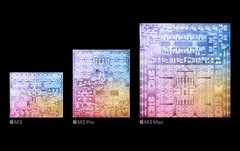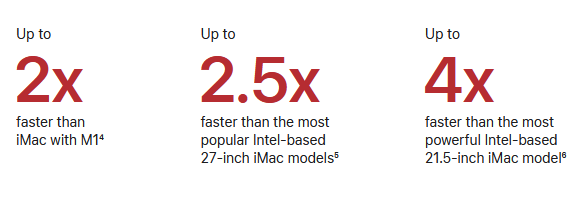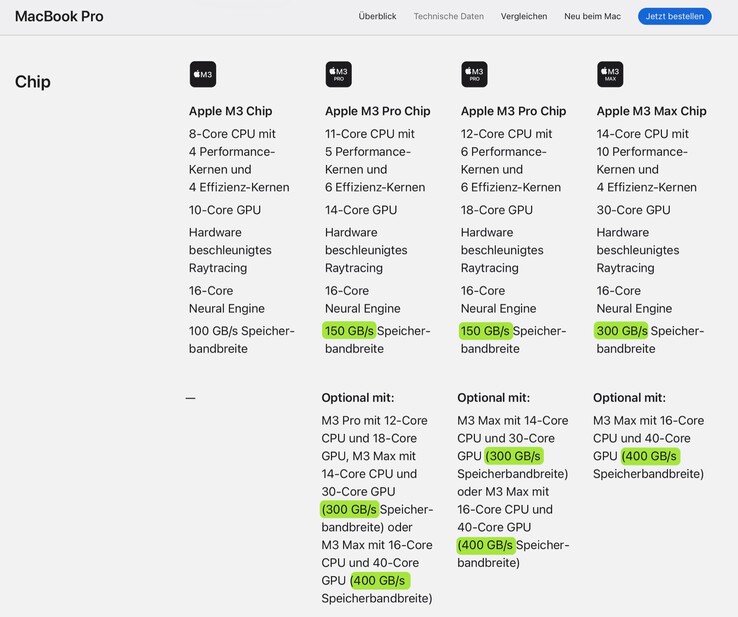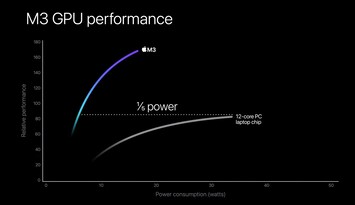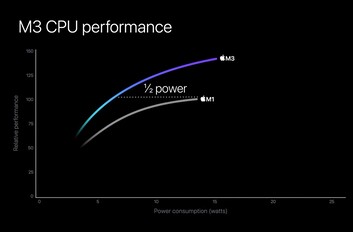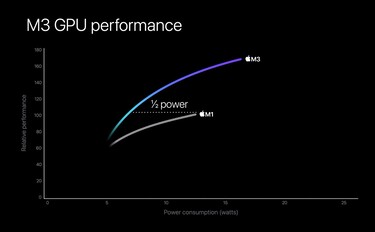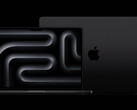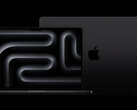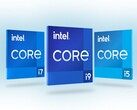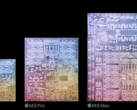Today, Apple unveiled its first Apple M3 based devices. With 3 nm fabrication width, hardware-accelerated ray tracing, dynamic caching, improved architecture, and additional computing cores and GPU computing units, the chips offer solid upgrades.
However, Apple's marketing should be viewed with caution. First and foremost, the claim that the new iMac is twice as fast is hardly true in any scenario. Even according to Apple's own claims, the Apple M3's processor is "only" 35% more powerful than the Apple M1, and the graphics chip offers 65% more performance. In order to achieve twice the performance, Apple uses the processing of ProRes videos, which are supported by the M3's media encoder, but not by the M1.
Also a pity is the fact that the Apple M3 still only supports one external monitor with a maximum of 6K resolution. Those wanting to operate two 6K monitors, an 8K screen or a 4K gaming display at 240 Hz have to fall back on the M2 Pro. In terms of memory bandwidth, buyers of the new MacBook Pro have to be much more careful than before. While the Apple M2 Pro always achieved a bandwidth of 200 GB/s and the M2 Max 400 GB/s, the speed of the M3 series is slower in many cases.
The Apple M3 Pro's memory bandwidth drops by 25 percent to 150 GB/s - this difference quickly becomes noticeable when gaming, for example. The Apple M3 Max only maintains the bandwidth of 400 GB/s in the top model with 40 GPU cores; the variant with 30 GPU computing units loses 25 percent bandwidth and thus "only" reaches 300 GB/s.
Apple's efficiency comparisons are also somewhat questionable. Instead of competing with the Apple M2 or AMD Ryzen 7040U, Apple uses the outdated Apple M1 and the near notoriously inefficient Intel Core i7-1360P for comparison. According to Apple's own data, the Apple M3 achieves the same CPU performance as the Core i7-1360P at a quarter of the power consumption, and even at a fifth of the power dissipation for the GPU.
Meteor Lake may have trouble keeping up with the efficiency of the Apple M3, but that hardly makes these comparisons any more meaningful. After all, Apple's benchmarks indicate that the processor consumes around 15 watts of power under load, while the graphics chip consumes around 17 watts - slighly more than the Apple M1 in any case.




